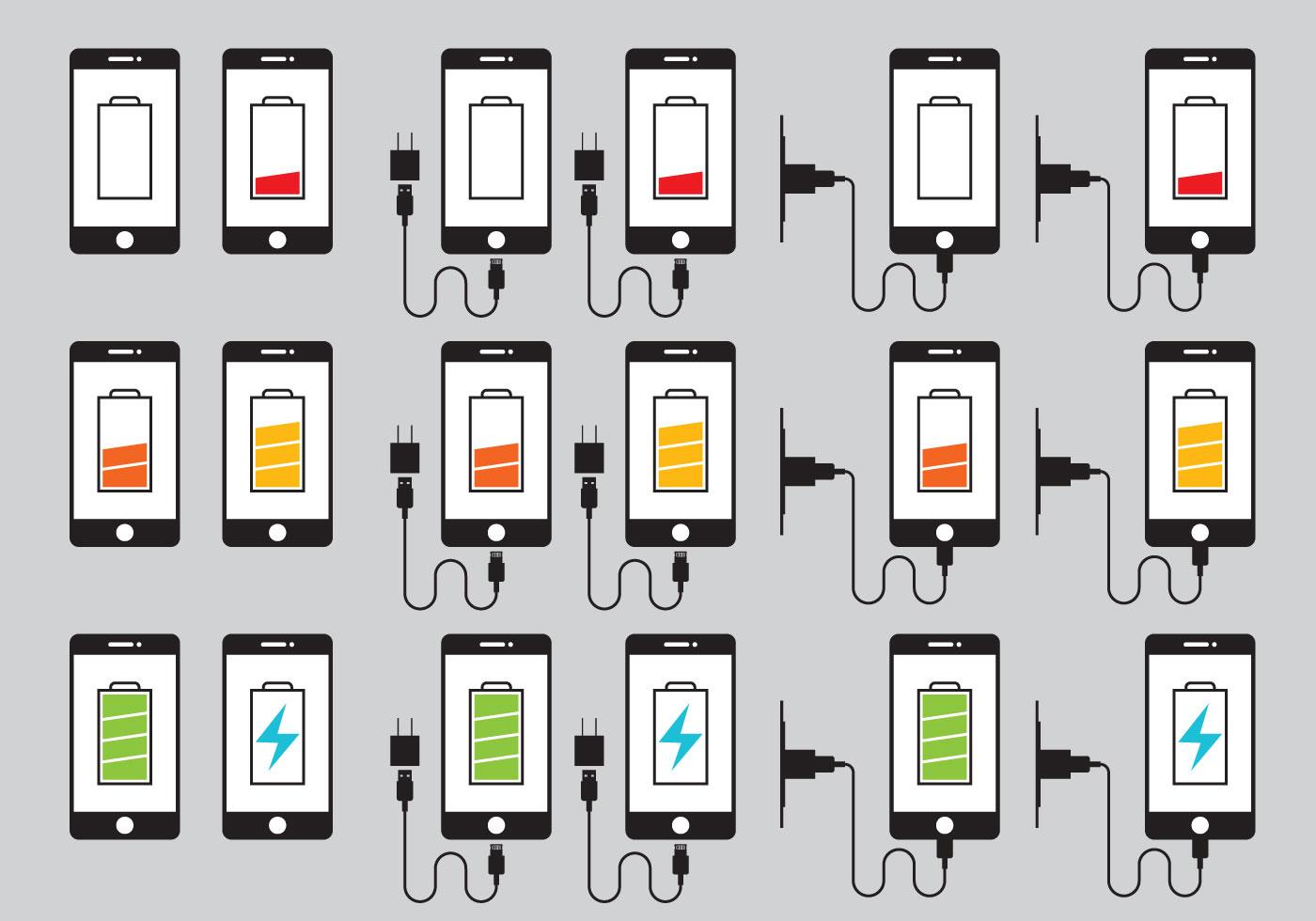"All About Battery Charging"
 Lets talk about all the ways battery charging is done via cables. Various manufacturers have adopted different methods to
transfer power to the batteries on smartphones and other electronic devices. We will focus on the charging methods used in smartphones.
Lets talk about all the ways battery charging is done via cables. Various manufacturers have adopted different methods to
transfer power to the batteries on smartphones and other electronic devices. We will focus on the charging methods used in smartphones.
One of the product differentiation used by manufacturers is the speed that the phone battery achieve 100% charge. One of the major standard is the Quick Charge method
Quick Charge
Quick Charge or is also called turbo charging, adaptive fast charging and QC rapid charging. Quick Charge (QC) is a Qualcomm-licensed technology. It’s a marketing phrase that signifies the power managing circuitry capabilities of a wall charger and smartphone. Basically, the technology can charge batteries faster without damaging it. Both the phone, charger and cable must be compatible to enable quick charging.
Although the technology is designed to work with Snapdragon chipsets, Qualcomm had licensed the technology to other vendors chipsets, such as Zenphone (Intel) and Exynos (Samsung).
Rapid charging is applied typically up to the 60-70% range. The charging process will become less aggressive as it reaches the 100% mark. This is to avoid affecting the life span of the battery.
These are three quick charge generations:
QC 1.0 – Devices with QC 1.0 compatibility were first released in 2013. QC 1.0 supports up to 2A and operates on 5V.
QC 2.0 – The next generation of quick charging. QC 2.0 is 50% faster than QC 1.0. It works on a multi-voltage charging system offering 5V, 9V and 12V up to 3A. This multistage voltage means when your device battery is really low it will charge with 12V, this allows for a really rapid charge, then as the charge gets higher it slowly drops the voltage (fixed values) until you reach normal QC 1.0 voltages and speeds.
QC 3.0 – Adds stepless multi-voltage charging, so adapts its voltage to deliver a faster charge. QC 3.0 voltage varies from 3-20V and delivers faster and more economical charging when compared to QC 2.0. QC 3.0 is about 15% faster than QC 2.0
QC 3.0/2.0 chargers can be used to charge older devices with QC 1.0 speeds, ensuring backward compatibility.
USB Power Delivery and Qualcomm Quick Charge 4.0 / 4+
USB Power Delivery (USB-PD) is a standard from USB-IF ( USB Implementers Forum, Inc. ). USB-IF is a non-profit corporation founded by the group of companies that developed the Universal Serial Bus specification. Qualcomm Quick Charge 4+ and USB-PD are intercompatible. USB-PD is used by Apple for their iphones ( iphone 8 and up ). Google Pixel phones also uses USB-PD. Current Samsung high end phones support USB-PD for the highest rate of fast charging.
| Version | Maximum Power | Voltage | Maximum Current |
|---|---|---|---|
| USB 2.0 | 2.5 W | 5 V | 500 mA |
| USB 3.1 | 4.5 W | 5 V | 900 mA |
| USB BC 1.2 | 7.5 W | 5 V | 1.5 A |
| USB Type-C 1.2 | 15 W | 5 V | 3 A |
| USB PD | 100 W | 5/9/15/20 V | 5 A |
All USB 2.0 devices provide a minimum of 500 mA at 5 volts. This increases to 900 mA with a USB 3.1 port. USB Type-C ports can be configured in fast charging modes at either 1.5 or 3.0 A for more power when connected to other Type-C devices or chargers. USB-PD is a separate specification that can work across USB 2.0 and 3.0 ports and cables, but you will still need a USB Type-C port due to the communication pins used by the standard.
Power Rules for both USB-PD 2.0 and USB-PD 3.0:
Sources >15W supply 5 volts and 9 volts
Sources >27W supply 5 volts, 9 volts, and 15 volts
Sources >45W supply 5 volts, 9 volts, 15 volts, and 20 volts
Maximum current of 5 A
In order to make use of the highest power modes, specially rated USB cables are required. As standard cables are only rated for 7.5W at most.
The difference between the two types of PD charging (2.0/3.0) lies in the amount of detailed information given by each type of PD. USB-PD 3.0 has worked to improve its power delivery but is primarily known for offering increased amounts of information about the device being charged and its power/ battery.
In addition to faster charging, USB-PD enables both host and peripheral devices to provide power. For example, your phone could be used to charge another device using the same USB-C port.
USB-PD can be used to charge laptops and it is becoming the default fast charging standard.